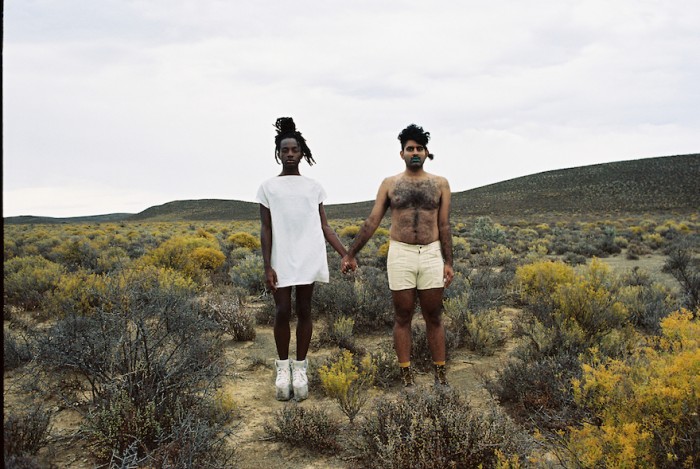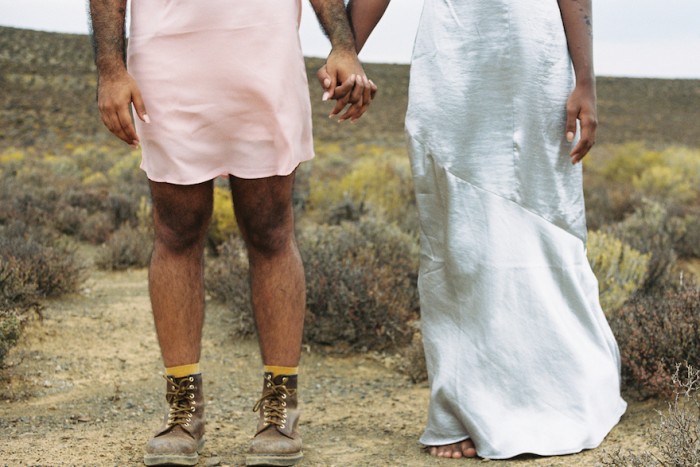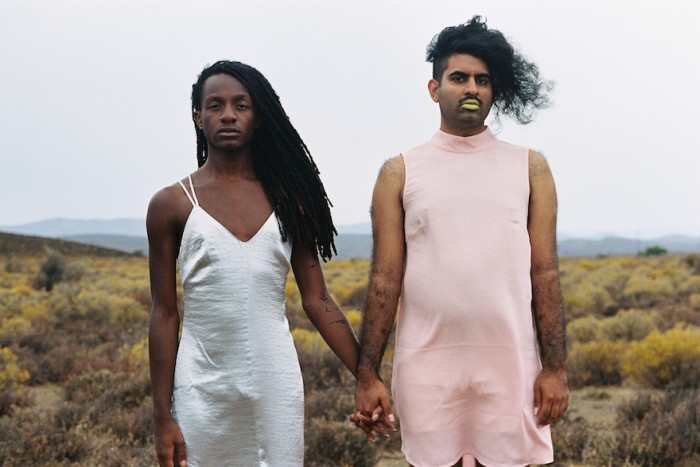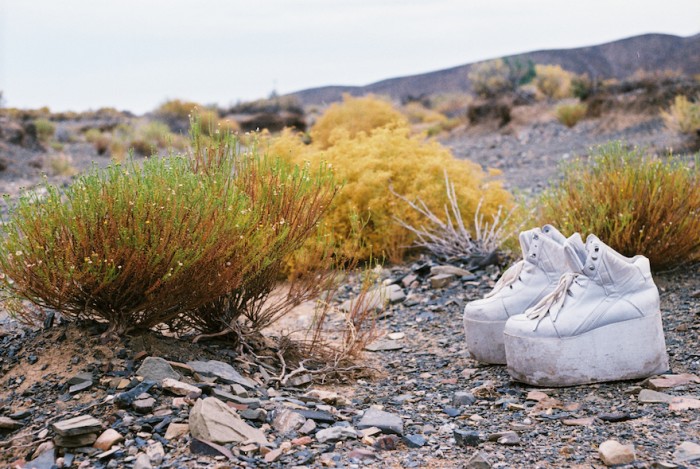From the Series
There are over 7 billion people on Earth as of 2015. All of us live in a world defined by a gender binary system that leaves over 7 billion people with only two choices. These two boxes restrict who you’re allowed love, how much you’re paid, what you’re allowed to look like and what you’re allowed to do with your body. It’s only natural that people push back against these restrictions and in doing so, many have been lauded as the brave leaders of a fluid way of living. But this article is not about heroism. Instead, it’s about the vulnerability in the lives of people who live outside social constructs, making themselves visible and open to ridicule and abuse. Visual storyteller and social researcher Zara Julius collaborated with artist and activist Joshua Allen and gender non-conforming artist Alok Vaid-Menon to unpack
“There’s a lot of difficult elements of being visible that I feel people often miss and ignore and so I was kind of wondering if Josh and Alok would be happy to speak from the position. The idea for vulnerability only came about retrospectively,” explains Julius, a South African filmmaker who explores the intersection of ethnography and visual art in her work.
“Alok and Joshua are both activists with regards to their own experience as gender non-conforming, femme people and so they are almost hypervisible in the work that they do. I can’t speak for them but from what I understand, they get online harassment, harassment on the street more, so than others.”
Julius’ background in anthropology has given her some insight into what can go wrong when observing a community outside of one's own. “I didn’t want to prescribe what’s important for them to think about because sure, we all might identify as queer people who are black and brown but we exist in different intersections. So, what I put forward was the idea of queer and non-binary or gender non-conforming visibility as opposed to vulnerability: What are the complications that come with taking a visible stance with your identity?”
Taking her lead, Vaid-Menon and Allen defined the message behind the series themselves, responding in written pieces that were first published by Unlabelled Magazine.
In their piece, Vaid-Menon reflects on living honestly while carrying the burden of representation: [It’s] as if all we are is an artefact to prove theories written to explain us never nourish us. They will dissect us say: "This is where man ends, this is where the woman begins," they will evaluate us by criteria that we never consented to: "hair is masculine, lipstick is feminine." This is why I rarely take photos without clothes. I am afraid of the tropes: "fabulous tranny disrobes and reveals...a man underneath!" But something about that early morning light, Josh's elegance made me just do it. I took off my shirt and for a couple of hours there was synchrony: my hairy body and my femininity, my nudity and me.”
Allen reflects on the horror of being hypervisible: “Because of this, I have always tried to shrink myself. To look down, walk quickly, speak softly. I thought that becoming smaller would minimise the horror that came along with existing at the intersection of both queer and Black. Unfortunately, it did not. I hope these images encourage you to break a few of the rules.”
The series brings important issues to the forefront. In the context of South Africa, a country with one of the most progressive constitutions in the world, are we doing enough to ensure the safety of the vulnerable? Are we doing enough to ensure that people can be vulnerable safely? At the same time, the work is joyful and unapologetic, reminding us that there are human beings behind the social construct of gender.








![<p>In their piece, Vaid-Menon reflects on living honestly while carrying the burden of representation: [It’s] as if all we are is an artefact to prove theories written to explain us never nourish us. They will dissect us say: "This is where man ends, this is where the woman begins," they will evaluate us by criteria that we never consented to: "hair is masculine, lipstick is feminine." This is why I rarely take photos without clothes. I am afraid of the tropes: "fabulous tranny disrobes and reveals...a man underneath!" But something about that early morning light, Josh's elegance made me just do it. I took off my shirt and for a couple of hours there was synchrony: my hairy body and my femininity, my nudity and me.”</p> SOFT by Zara Julius, artist and activist Joshua Allen and gender non-conforming artist Alok Vaid-Menon](https://www.designindaba.com/sites/default/files/styles/scaledlarge/public/node/news/23394/gallery/zj-10-%C2%A9-zara-julius.jpg?itok=zLEYKenQ)











